Jim Waters: The Development of GPC and the First HPLC Instruments
LCGC North America
Leslie Ettre looks at the life of industry giants Jim Water and his contributions to the development of HPLC.
In the May issue of our magazine, I discussed the activities of Csaba Horváth in the 1960s, leading to the first modern, high-pressure liquid chromatograph (1). Naturally, however, his achievements do not imply that nothing had been done previously in converting liquid chromatography (LC) from a purely empirical, manual laboratory technique into a more controlled, automated instrumental method. According to Greek mythology, the Goddess Pallas Athena was born by jumping out of the head of Zeus, grown up and fully armed with spear and shield. However, this only happens in mythology or fairy tales. In science and technology, evolution is more or less gradual, and each major development has its antecedents.

Leslie S. Ettre
Csaba Horváth's instrument was without question the first modern, high-pressure liquid chromatograph and as such, it essentially represented the start of the present-day instruments one can find today worldwide in almost every laboratory. However, by the middle of the 1960s, instrumentation already existed in two other branches of LC: in amino acid analysis by ion-exchange chromatography and in the investigation of molecular-weight distribution of polymers by the technique of size-exclusion (gel-permeation or GPC) chromatography. In fact, these instruments can be considered the first automated liquid chromatographs.

The development of the first gel-permeation chromatograph is closely connected with Jim Waters, the founder and for 20-years the leader of Waters Associates. However, his merit is not restricted to this single product line. By the end of the 1960s, he succeeded in becoming a major player in the meteorically growing field of LC, transforming his company into "the Liquid Chromatography People." Both achievements can be characterized as true milestones in the evolution of chromatography.
In October, Jim Waters is celebrating his 80th birthday. As a tribute to his many contributions to chromatography instrumentation, the present "Milestones" column will discuss his early career, his involvement in making GPC a standard laboratory tool, and the start of Waters Associates' involvement in LC.
Origin; Early Activities
The ancestors of the Waters family settled in 1640 in Salem, Massachusetts, and then, with the expansion of the United States, gradually moved westward, eventually reaching Nebraska in 1885. James Logan Waters was born there on October 7, 1925, but in 1942 the family moved back to Massachusetts. As all the young men of his generation, after Pearl Harbor, Jim joined the Armed Services, enrolling in the Navy's officer's training program. He graduated in 1946 from Columbia University, New York, New York, with a B.S. degree in physics and a commission as an ensign in the U.S. Navy. After a short period as a naval officer, he joined Baird Associates, a small company in the Boston area making spectrographs. At that time, the U.S. government issued a number of reports on science and technology in Germany during the war, and Jim read the one on instrumentation. This inspired him to set up his own company, J.L. Waters, Inc., with the aim of developing scientific instruments based upon descriptions in this report.
The postwar period can be characterized as the start of the transformation of chemistry from "wet" methods of classical analysis to the use of instruments based upon some physical measurement. This transformation was best characterized in 1962 by H.A. Liebhafsky, with his famous sentence: "Like it or not, the chemistry is going out of analytical chemistry" (2). Jim established a connection with Mine Safety Appliance Co. (MSA), a company in Pittsburgh, Pennsylvania, and designed and built for them an infrared gas analyzer. In 1955, he sold his small company and the design of this instrument to MSA, receiving enough money to continue as an independent instrument developer. Then, in 1958, he formed a new company, Waters Associates.
In the first years, Jim's new company was small. He had only five employees and was operating in the rental basement of the former police station in Framingham, Massachusetts. His aim was to develop an instrument for anybody who had the need to measure something. In this period, he developed a hydrometer for the U.S. Air Force to be used in balloon flights, a flame photometer for detecting toxic gases, and another flame photometer specially built for the Indian Point Nuclear Power Plant to check possible salt contamination in the water used in the boilers, which would corrode the heat exchangers; this photometer could also be sold to the Baltimore Gas & Electric Co. He also developed a differential refractometer, with a 1-mL cell, which found limited use in process control in chemical plants.
The Breakthrough: GPC
At that time, LC was still in the laboratory stage, using small glass columns and gravity flow of the eluent liquid. The only essential difference as compared to the technique of M.S. Tswett 60 years earlier was that by now, the separated individual fractions did not remain on the column packing but were washed out of the column, the column effluent was collected in small fractions, and the content of each fraction was determined. However, slowly, the method first described in the early 1940s by Tiselius in Uppsala, Sweden, also gained in use: the column effluent was continuously monitored, measuring its refractive index, which changed due to the presence and amount of the individual sample components (3). Learning about this new trend, Jim Waters was considering modifying his refractometer for LC use. Then, one day in 1961, he was contacted by John C. Moore, a young scientist at Dow Chemical Co. in Freeport, Texas who wanted a refractometer with a very small, 0.1-mL cell, to be used at room temperature, with aqueous flow. Jim Waters built one for Dow without knowing its actual use. Nine months later, Moore had a new requirement: he now wanted to have a refractometer that could be used with an organic solvent (o-dichlorobenzene) instead of water flow, and at 135 °C instead of room temperature. Again, Jim Waters developed the detector, still without knowing about its planned use. Only after Dow filed a patent application (4) did he learn that Moore needed the refractometer as a detector for a new method to establish the molecular weight distribution of high polymers: GPC. The reason for the two different specifications was that at first, Moore investigated polyglycols, in aqueous solution and at room temperature, followed by the study of polystyrene samples, which could only be dissolved in organic solvents like o-dichlorobenzene, and the solutions had to be kept at elevated temperatures.
After some negotiations, Dow granted exclusive license to Waters Associates on the technique. The task the company faced was great: in addition to designing and building an instrument, they also had to master the synthesis of the rigid cross-linked polystyrene–divinylbenzene (PS–DVB) gel used as the column packing. Up until then, Moore only produced this in smaller batches but now, Jim Waters had to scale up its production to be able to supply columns with the instruments. For this, they converted the female detention area of the former police station in Framingham into a laboratory (Figure 1). After some experimental work, he was able to upscale the original laboratory process to 55 gallon drums and set up regular production of the material with various pore sizes, sold under the trade name Styragel.
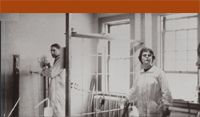
Figure 1: The laboratory of Waters Associates in 1963, established in the female detention area of the former Framingham police station. Right, in forefront, technician Nicky Anastis is stirring a batch of the PS-DVB mixture used to synthesize the Styragel column packing. The reaction vessel was fabricated by Jim Waters from a standard, 55-gallon metal drum.
It should be noted that Moore's technique for size-exclusion chromatography also had its antecedent: gel-filtration chromatography of Porath and Flodin, in Uppsala, Sweden, using soft, compressible, hydrophilic cross-linked dextran gels with the brand name Sephadex (5). However, these gels only permitted a slow flow of aqueous solution through relatively short columns and could not be used for the separation of high-molecular-weight macromolecules. Typically, these columns have been used in the classical way, collecting small-volume fractions of the column effluent, but actually, in 1962, Jim Waters personally installed a refractometer detector in Porath's laboratory to monitor the effluent of gel-filtration columns. In contrast to Sephadex, Moore's controlled-porosity, rigid PS-DVB copolymer beads could also be used with organic solvents and permitted the separation of sample components with molecular weights ranging from several thousand to several million; and while permitting fraction collection, column effluent was continuously monitored with the differential refractometer detector, producing a true chromatogram.
In 1963, Waters produced five prototypes of the new GPC instrument. These were large, floor-standing units, larger than a kitchen refrigerator. In these prototypes (Figure 2), the column oven (an air thermostat) was made of plywood, with asbestos insulation; this was then changed in the final version to a metal cabinet. Three of these prototypes went to Dow Chemical, and one each to B.F. Goodrich and Mobil Chemical. The final instrument was introduced to the public at the 1964 Pittsburgh Conference under the name GPC-100; its price was $12,500 (Figure 3). By then, Moore's fundamental paper was finally published (6) and in this way, chemists interested in the new technique could learn directly from its inventor. (It is interesting to note that it took well over a year to publish this paper: Moore submitted the manuscript to the editorial offices of the Journal of Polymer Science in December 1962, but it was published only in the spring of 1964.)
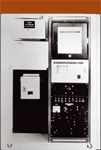
Figure 2: The prototype of the Model GPC-100 gel-permeation chromatograph built in 1963. Top left is the refractometer optics module, while the small metal box in the lower left contains a device continuously measuring the volume flow rate of the pump. The column oven in the back of the left-hand module permits the installation of four 4-ft long columns. All the electronics are in the right-hand module, with a potentiometer recorder at the top.
Aside from the small-volume differential refractometer, key components of the new instrument were the multiport valves for sample introduction and column switching. The eluent flow was pumped from a reservoir through a heater to degas the solvent and through a filter to a mixing chamber needed to dump out pumping pulsations. A Milton Roy pump was used in the instrument; Jim Waters designed his own pump only later, for high-pressure liquid chromatographs (see below).
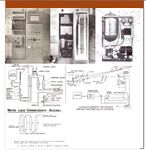
Figure 3: Illustrations from the GPC 100 Instruction Manual in 1964. The production model instrument is housed in a metal cabinet, though the arrangement of components is the same as in the 1963 prototypes. The pump, shown top right, was made by Milton Roy. Jims differential refractometer was a key innovation. Note that the fluid system was termed: "Waters Liquid Chromatography Assembly."
The acceptance of the new instrument and of the new technique was great, and in 1964, the company sold 40 units. The new technique really filled a gap: using classical methods, it took three to four weeks' hard work to establish the molecular-weight distribution of a single sample. Now, with the new instrument, one full analysis could be accomplished in about an hour and half.
At the end of 1964, Larry E. Maley, Waters' marketing manager who was instrumental in demonstrating the new instrument to prospective customers, had the brilliant idea to organize the first GPC symposium. This was held in Cleveland, Ohio, in January 1965. Two plenary lectures were presented by Fred W. Billmeyer, professor of polymer science at Rensselaer Polytechnic Institute (RPI; Troy, New York) and by John Moore; these were followed by about 20 papers by users of the instrument and by lengthy discussions (Figure 4). The symposium was so successful that Waters repeated it in 1966, now at the Fontainebleau Hotel in Miami Beach (certainly a more hospitable place than Cleveland in the middle of winter!). Since then, these symposia became regular yearly events.
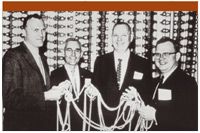
Figure 4: Key participants at the First Waters GPC Seminar, held in Cleveland, Ohio, in January 1965. From the left: Jim Waters, John C. Moore (Dow, Freeport, Texas), Prof. Fred V. Billmeyer (RPI) and Larry E. Maley (VP of Sales, Waters). They are holding a model representing a 100,000 MW linear polymer.
In subsequent years, Jim Waters further improved the instrument, introducing a number of improved models, permitting both analytical and semi-preparative work. Without any question, making size-exclusion (gel-permeation) chromatography a routine laboratory tool for the characterization of polymers can be attributed to him.
Liquid Chromatography
In the early 1960s, gas chromatography (GC) was the prevailing chromatographic technique (7) and, as mentioned earlier, LC was still done essentially in the classical way, with very little change from Tswett's original description of the technique. However, slowly researchers well versed in the theory and practice of GC realized that changes were needed to make LC compatible with regard to both speed and resolution. In my discussion of Csaba Horváth's early activities (1), I dealt with this trend. Jim Waters was also thinking along this line. In an internal document from this period, he stated that "We believe LC can become a mass market which will extend far beyond the research laboratory into production, quality control, and clinical testing" (8). Waters Associates already sold a limited number of their small-volume refractometers to chromatographers, to monitor the effluent of classical LC columns. Then, in 1965, Jim became involved in the development of a liquid chromatograph for Shell Development Co.
Shell Development Co. in California had been involved in the development of new instrumentation for their own use and usually licensed smaller companies to produce these. For example, in the early stage of GC development, they licensed a short-lived California company, Hallaikainen Instruments, to build gas chromatographs based upon their design, and Hallaikainen also sold a few to customers other than Shell (7). The situation was similar with LC. By the mid-1960s, Shell had developed an LC system and in 1965, Jim Waters secured a license to construct instruments based upon this design. Shell's system was based upon liquid–liquid chromatography (LLC), and Waters built two prototypes using his refractometer detector: one for Shell and a second for the University of Alberta, in Canada.
Many of the researchers who started to upgrade LC in the 1960s were not sure which approach to take: follow the GC example and use columns coated with a (liquid) stationary phase, or utilize a solid stationary phase (i.e., an adsorbent); in other words, carry out liquid–liquid or liquid–solid chromatography (LLC or LSC). Shell's approach was the former. However, Jim soon realized (just as eventually the other pioneers in this early period of modern LC development) that this was not the right approach. The system was not stable and the detector drifted widely. Therefore, Jim completely redesigned the original Shell system. Meanwhile, reports on the work of other pioneers started to be known and Karl J. Bombaugh, Waters' director of R&D, learned at the 1966 Chromatography Symposium held in Rome, Italy, about the approach selected by Csaba Horváth (1) (I was present and still remember vividly their discussion). As a conclusion, Jim Waters switched to the use of solid column packing (an adsorbent), also included a UV detector, and adopted the system for high-pressure operation. The resulting instrument, the ALC-100 analytical liquid chromatograph — the first commercial high-pressure liquid chromatograph — was formally introduced at the 1968 Pittsburgh Conference (Figure 5). It was a benchtop system equipped with a Milton Roy pump, syringe injection, and two detectors: the Waters differential refractometer and a UV detector from the Laboratory Data Control (LDC) Co.
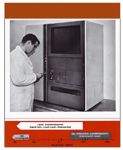
Figure 5: The Model ALC-100 high-pressure analytical liquid chromatograph introduced in 1968. The box on the right top is the compartment for the solvent bottles; below it are the control panels for the refractometer (left) and UV (right detectors and at the bottom is the pump compartment). The left-hand side of the instrument is the thermostatted column compartment. The operator is injecting a sample with a syringe into the injection port. A separate two-pen potentiometric recorder is used to record the chromatograms.
Almost simultaneously with the ALC-100, Jim designed another instrument for large-scale operation, for both GPC and LC: the Chromato-Prep (Figure 6). It was a six-foot tall, floor-standing instrument on casters, equipped with the same two detectors as the ALC-100. It had a 40-port valve with an integral, time-based fraction collector.
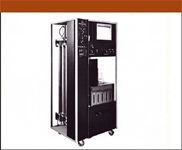
Figure 6: The Chromato-Prep GPC-LC instrument for preparative-scale work, introduced in 1968. The column compartment is open, showing four columns installed. Below the space in the middle of the right side of the module is a fraction collector, while the two-pen potentiometric recorder is installed in the right top.
As mentioned earlier, Waters Associates first used a pump made by another company. However, Jim was aware that the pump was the key component of a liquid chromatograph; therefore, he initiated a major project to develop the M6000 pump announced in December 1972, and formally introduced at the 1973 Pittsburgh Conference (Figure 7). It represented a major innovation, providing pulseless flow at 6000 psi and flow rates between 0.1 and 9.9 mL/min.
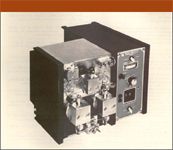
Figure 7: The Model 6000 solvent-delivery system for liquid chromatographs introduced in 1973.
A milestone in Jim Waters' involvement in LC occurred in 1972. At that time, Professor Robert B. Woodward of Harvard University (who received the 1965 Chemistry Nobel Prize) was involved in the synthesis of Vitamin ±2, but had difficulties in separating two positional isomers of a key intermediary compound along the synthesis. Woodward left for Europe and entrusted Dr. Helmut Hamberger, one of his principal postdoctoral assistants, with the task of trying to solve the problem. In turn, Dr. Hamberger contacted Jim, asking whether LC could be of help. In turn, he took a Model ALC-100 liquid chromatograph to Harvard and, in cooperation with Dr. Hamberger, was able to accomplish within a week the separation (8). Upon the return of Professor Woodward the happy pair could surprise him with 200 mg of the pure compound. A photograph made with Woodward (Figure 8) was used by Waters Associates to promote their excellence in LC among university professors involved in organic synthesis work. (Prof. J.F.K. Huber of the University of Amsterdam, The Netherlands, a pioneer in modern LC, was visiting Waters Associates at that time and came along with Jim for the visit to Harvard. In 1974, Dr. Huber became professor at the University of Vienna, in Austria.)
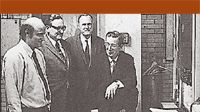
Figure 8: At Harvard University, in 1972. Left to right: Dr. Helmut Hamberger (Harvard), Prof. J.F.K. Huber (University of Amsterdam), James L. Waters, and Prof. R.B. Woodward (Harvard). An ALC-100 liquid chromatograph can be seen on the right; the pump compartment's door is open.
By the early 1970s, Waters Associates was firmly established as the key player in high-performance liquid chromatography (HPLC) and thus, they rightly trademarked the tagline "The Liquid Chromatography People" for the company. This slogan corresponded to the truth: for years they had a dominant role in the field. By the end of the 1970s, when the worldwide LC market was estimated between $100 and 150 million, Waters had 50% of it [9]. In the 25 years since then, the use of LC has undergone a meteoric rise to become the most widely used laboratory technique. At present, the combined LC and LC–MS markets is estimated as about $3 billion (10). Naturally, the relative share of Waters Associates was slowly reduced (the competition "grew up"). However, the company is still the world leader in this field (10).
Jim Waters — An Appraisal
The subject of this review was the activities of Jim Waters in establishing GPC as an important chromatography technique, and in the early development of instrumentation for HPLC. Still, we cannot finish our discussion without saying a few words about the last three decades. Jim Waters served as the president of the company until 1972 when Frank Zenie, up to then the head of manufacturing, took over as the C.E.O. and Jim became chairman of Waters Associates. In 1973, the company moved to Milford, Massachusetts, greatly expanding its operation. Finally, in March 1980, it merged with Millipore Corporation but in 1994 it split, again becoming an independent company. After the merger with Millipore, Jim Waters left the company and since then has been focusing on venture capital opportunities.
During his 22-year leadership between 1958 and 1980, Waters Associates grew from five to 1100 employees, with a yearly sales volume of close to $100 million. Today, Waters Corporation and its subsidiaries have around 4000 employees worldwide, and a yearly sales volume exceeding $1 billion. Its success is a tribute to its founder, who set the company on the road to becoming the principal player in LC instrumentation.
Acknowledgements
This review of the activities of James L. Waters and the early development of GPC and LC instrumentation is based upon a number of previous articles (8,9,11–13), as well as on additional information obtained from Dr. Patrick D. McDonald, Senior Fellow of Waters Corporation, who has been associated with the company for over three decades. The figures were obtained from Waters Corporation through Dr. McDonald. I would like to express my appreciation to Dr. McDonald for his help and to Waters Corporation for permission to use copyrighted material.
Leslie S. Ettre From 1988 to 2004, "Milestones in Chromatography" editor Leslie S. Ettre was associated with the Chemical Engineering Department of Yale University (New Haven, Connecticut), first as an adjunct professor and then as a research fellow. Previously, he had been with the Perkin-Elmer Corporation for 30 years. He is currently a member of LCGC's editorial advisory board. Direct correspondence about this column to "Milestones in Chromatography," LCGC, Woodbridge Corporate Plaza, 485 Route 1 South, Building F, First Floor, Iselin, NJ 08830, e-mail lcgcedit@lcgcmag.com.
References
(1) L.S. Ettre, LCGC 23(5), 486–495 (2005).
(2) H.A. Liebhafsky, Anal. Chem. 34(7), 23A–33A (1962).
(3) L.S. Ettre, in High-Performance Liquid Chromatography — Advances and Perspectives, vol. 1, Cs. Horváth, ed. (Academic Press, New York, 1980), pp. 1–74.
(4) J.C. Moore, U.S. Patent 3,326,875 (Filed: Jan. 31, 1963; issued: June 20, 1967).
(5) J. Porath and P. Flodin, Nature (London) 183, 1657–1659 (1959).
(6) J.C. Moore, J. Polymer Sci. A2, 835–843 (1964).
(7) L.S. Ettre, J. Chromatogr. Sci. 15, 90–110 (1977).
(8) B.J. Murphy, "About Waters" tab /Waters/Profile/History in: http://www.waters.com <http://www.waters.com> (2003).
(9) Forbes Magazine, May 1979, pp. 162–164.
(10) "The Laboratory Life Science and Analytical Instrumentation Industry" (Strategic Directions International, Inc., Los Angeles, California, June 2004), pp. 62–71.
(11) Gordon Wilkinson, Analytical Instrument Industry Report 7(4), 4–5 (1990).
(12) J. Poudrier and J. Maynihan, in Made to Measure (American Chemical Society, Washington, DC, March 1999), pp. 11–12.
(13) D. O'Reilly, Makers of Modernity — Members of the Pittcon Hall of Fame (Chemical Heritage Foundation, Philadelphia, Pennsylvania, 2005), p. 28.

Common Challenges in Nitrosamine Analysis: An LCGC International Peer Exchange
April 15th 2025A recent roundtable discussion featuring Aloka Srinivasan of Raaha, Mayank Bhanti of the United States Pharmacopeia (USP), and Amber Burch of Purisys discussed the challenges surrounding nitrosamine analysis in pharmaceuticals.
Extracting Estrogenic Hormones Using Rotating Disk and Modified Clays
April 14th 2025University of Caldas and University of Chile researchers extracted estrogenic hormones from wastewater samples using rotating disk sorption extraction. After extraction, the concentrated analytes were measured using liquid chromatography coupled with photodiode array detection (HPLC-PDA).











